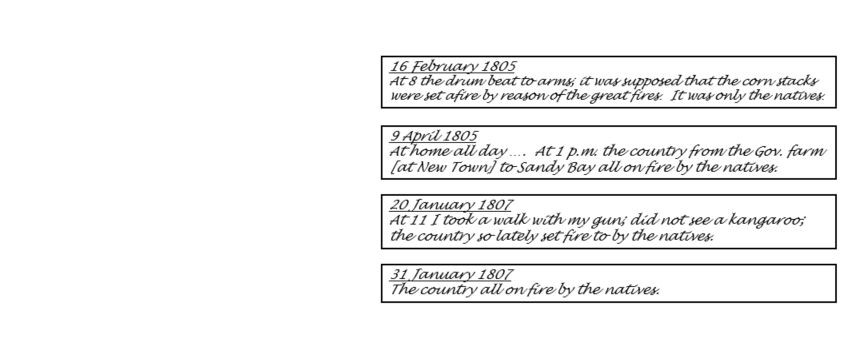Extracts from Knopwood's Diary

Extract from Knopwood Diary November 1815 (p. 217)
Thursday 9 November
At 7 in the evening a party of natives came to my house.
They went into the kitchen; two women, 3 girls and two boys.
I ordered them some bread and meat and gave them potatoes; they roasted them.
In the eve I took a doll which my little orphan girl Mary Mack has dressed and shewd them it.
They thought it was one of our children, that was dead, and the poor old woman took it in her arms and kept it. (When their young children die they carry it about with them).
At 9 pm, I went to see them; they had prepared themselves for the night by a good fire.
__________________________________
When my man came this morn, I enquired what had become of my sable guests that came the eve before, and was informd that they were in the kitchen and had breakfasted off bread, potatoes, meat etc. When I got up they were going then going away with the whole party.
Later in the morning I walkd down the garden and found the natives had made a fire at the bottom of my land and were getting oysters and mussels.
At different times during the day many of the inhabitants came to see the natives. They stayed there all day and night then the natives went away.
In 1805 Reverend Robert Knopwood was granted 30 acres of land between today’s Salamanca Place and Hampden Road. Here he built his home, Cottage Green and established a productive garden.
He often noted visitors in his diary.
In 1805, these included an Aboriginal woman and her child who camped at the bottom of his garden on the shoreline before disappearing.
As Knopwoods house was in Battery Point, quite close to the Sandy Bay campus it is likely the Aboriginal people travelled over this land along the way.
The walk is presented with photos, paintings, historic maps and descriptions on this page:
https://www.batterypointwalk.com.au/locations/cottage-green/



